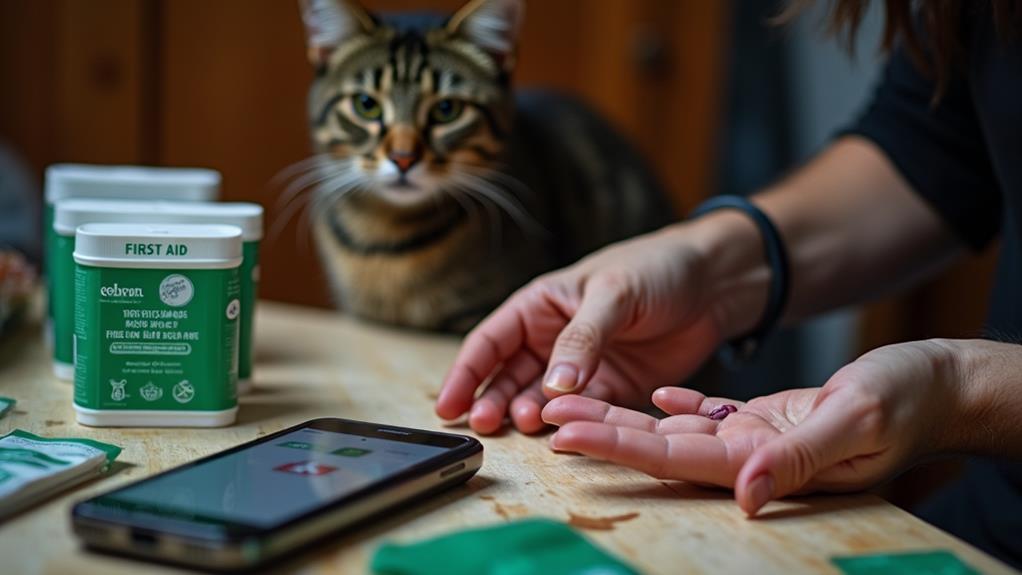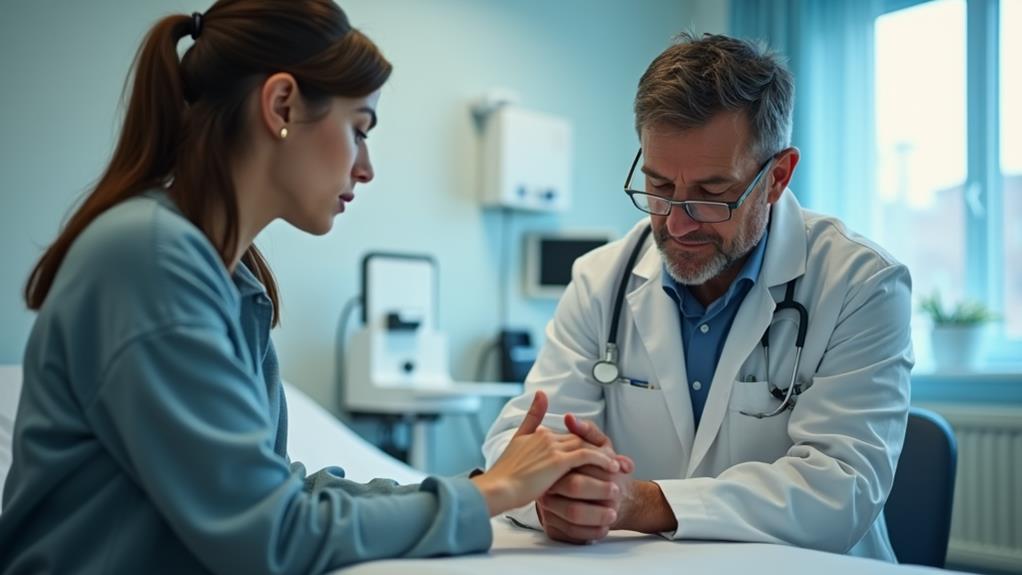What to Do If a Feral Cat Bites You: Safety and Medical Steps

If a feral cat bites you, promptly wash the wound with soap and water for at least five minutes. Apply antibiotic ointment and cover it with a sterile bandage. It's wise to seek medical attention, especially if the bite is deep or shows signs of infection like fever, redness, or pus. Feral cat bites carry a high risk of infection due to bacteria, so monitoring symptoms is crucial. A doctor might recommend a tetanus shot or rabies prophylaxis if necessary. By addressing the wound correctly, you can mitigate risks and protect your health. Uncover more ways to stay safe and healthy.
Immediate Actions to Take
If a feral cat bites you, it's vital to act quickly to reduce the risk of infection. Start by immediately washing the wound thoroughly with soap and water for at least five minutes. This step is significant to minimize the risk of infection from cat bites. After cleaning, apply an antibiotic ointment to the wound. This helps prevent bacteria from taking hold. Once you've applied the ointment, cover the wound with a sterile bandage to keep it protected from further contamination.
Seek medical attention promptly, especially if the bite is deep or bleeding heavily. It's also necessary if you notice signs of infection, such as redness or swelling. Discuss the cat's health status with your healthcare provider; if the cat appears feral or unvaccinated, a rabies vaccination may be necessary. This is a pivotal step to avoid serious complications.
Monitor the bite site closely for any worsening symptoms. Watch for fever, pus, or increased pain, and report these changes to a medical professional immediately. By taking these steps, you can effectively manage the wound and reduce potential health risks associated with cat bites.
Understanding Infection Risks
Infection risks from feral cat bites are significant and shouldn't be underestimated. These bites often result in infections because of bacteria like Pasteurella multocida. This bacterium can lead to severe complications if you don't seek prompt medical treatment. In fact, approximately 50% of cat bite injuries get infected. The symptoms include redness, swelling, and pus developing at the bite site. Often, people notice swollen lymph nodes, especially if the bite is deep.
Deep wounds caused by a cat's sharp teeth increase the risk of infection. These punctures can trap bacteria beneath the skin surface, which makes them a breeding ground for infections. Untreated, these infections can escalate into serious conditions such as cellulitis, septicemia, or deep infections impacting tendons and nerves.
To mitigate these risks, it is crucial to clean the wound immediately after a cat bite. However, even with proper initial aid, you shouldn't assume everything's fine. The potential for infections to worsen means you should seek immediate medical attention. Delaying can lead to hospitalization or long-term health issues. Always prioritize your health and take any feral cat bite seriously.
Seeking Medical Attention

When a feral cat bites you, seeking medical attention should be your top priority. Cat bites can carry serious risks due to bacteria like Pasteurella multocida, which can lead to infection. It's essential to have your wounds evaluated by a medical professional, especially if the bite is deep or continues to bleed. If you notice symptoms such as redness, swelling, or fever, these might be signs of infection that require immediate attention.
Your doctor will assess if you need a tetanus shot, particularly if your last vaccination was over five years ago. Tetanus prophylaxis is an significant preventive measure to think about. Furthermore, if the rabies status of the feral cat is unknown or if the cat exhibits rabies symptoms, post-exposure rabies prophylaxis (PEP) might be necessary to prevent this deadly virus.
Keep a close eye on the bite site for any changes or worsening symptoms. If you experience flu-like symptoms or if the condition of the wound deteriorates, return to your healthcare provider for further treatment. Prompt medical evaluation and treatment are essential to prevent complications from a cat bite and protect your health and safety.
Preventive Measures
To reduce the risk of feral cat bites, it's vital to take preventive measures. Start by avoiding any attempt to approach or handle feral cats, as they can become aggressive when they feel threatened. Educate your children about the importance of not teasing or chasing feral cats. This helps to prevent aggressive encounters and guarantees their safety. Always supervise pet interactions between children and unfamiliar cats to minimize the risk of bites and accidents.
When handling injured or stray cats, use protective gloves. This reduces the chance of getting bitten and helps avert possible infections. It's a simple yet effective way to protect yourself while offering assistance to a cat in need.
Additionally, regular veterinary check-ups for your pets are important. These visits confirm that your animals are up-to-date with vaccinations against diseases that could be transmitted through bites. Following medical advice from your vet will help safeguard both your pets and your family.
Monitoring and Aftercare

After a feral cat bite, vigilance is your best ally in ensuring proper healing and preventing complications. Start by monitoring the wound daily for any signs of infection such as redness, swelling, warmth, pus, or increased pain. Infections can set in quickly, so keep the wound clean and dry, and change the dressing regularly. This prevents contamination and promotes healing. Be on the lookout for systemic symptoms like fever, chills, or swollen lymph nodes. These could indicate a more serious infection requiring immediate medical attention.
If the biting cat was unvaccinated or its rabies status is unknown, consult a healthcare professional within 24 hours to discuss the need for rabies postexposure prophylaxis (PEP). Rabies is a severe disease, and quick action is essential. Follow up with your healthcare provider if the wound doesn't heal properly or if persistent symptoms arise. They might need to reassess and possibly provide further medical intervention.




